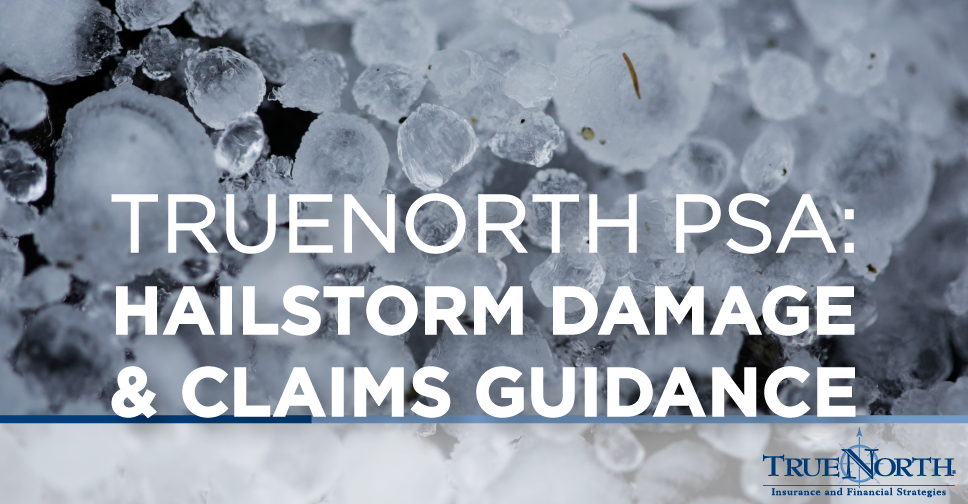TrueNorth Offers Storm Damage Claims Guidance

Hailstorms may occur anywhere throughout the United States and between the months of March to October, with May typically being the most active month for hail. With so many properties being damaged by widespread hailstorms, insurance carriers can be backlogged with inspections and the claims process can be a long and, sometimes, frustrating experience.
Review these tips & tricks to ensure you are ahead in the claims process and to make sure you are prepared to handle a potential hail damage claim of your own.
Notify the insurance company and locate a reputable contractor
The first step is to get a claim filed with your insurance company as soon as you know your property has been damaged by hail; the sooner they are notified, the sooner an inspection can take place. Large hailstorms will keep roofing companies busy. You will want to find a reputable contractor who can repair the damages sustained by hail.
Documentation is needed to process your claim
Take photos of the damaged property, including the roof (if you are safely able), siding, gutters, and downspouts. Take photos of the hailstones to document the size--this will assist the claims adjuster in locating and verifying the damages related to the hail.
Obtain multiple estimates
Having multiple estimates from repair contractors will help weed out potential “storm chaser” contractors. You will be able to compare the scope of work from each contractor’s estimate with the insurance company’s estimate.
Inspection of the damages
Once an inspection is scheduled, you will be able to meet with the claims adjuster to point out the damages and ask any questions. If you have a contractor already lined up, they can also meet with the claims adjuster during the initial inspection to determine the scope of damages, as well as costs for repairs. The claims adjuster will review the damages to determine if repairs or replacement is warranted and compile an estimate.
Payment
Once an agreed price for repairs is reached between the claims adjuster and your contractor, the insurance company will most likely issue a payment for the ACV (Actual Cash Value) less your deductible. The ACV is the amount equal to the replacement cost minus depreciation of the damages at the time of loss.
If you have Replacement Cost Coverage on your policy, you may be entitled to receive an additional payment from your insurance company once the repairs or replacement of your damages are completed by your contractor. This payment would be the depreciation owed now that your damages have been replaced. Depreciation may not be applicable on certain repairs, therefore make sure to address this with your claims adjuster.
Reconciliation
More damage relating to the hailstorm may be found once repairs are underway. Your contractor will need to submit another estimate to the claims adjustor alongside any supporting documentation (cost to repair newly found damages, photos of damages, etc.) so supplemental payments can be issued. Make sure to address newly found damages with your claims adjustor before allowing your contractor to proceed with additional repairs.
If you have any questions your claims adjuster did not initially address, please reach out to your TrueNorth agent for further guidance.
This publication has been prepared by TrueNorth Companies, L.C. and is intended for informational purposes only. Transmission of this publication is not intended to create, and receipt does not constitute, a client relationship with TrueNorth Companies, L.C. This publication does not constitute any type of representation or warranty, and does not constitute, and should not be relied upon as, legal advice. This publication is not a contract and does not amend, modify or change any insurance policy you may have with an insurance carrier.© 2020 TrueNorth Companies, L.C. All rights reserved.